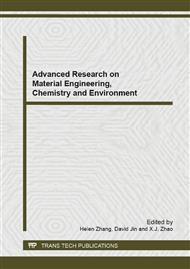p.283
p.288
p.293
p.298
p.302
p.307
p.311
p.315
p.321
Impact of Shallow Groundwater Quality Evolution in Kunming Urban by Human Activities
Abstract:
Chemical components of the groundwater change with time and space due to the influence of environmental geological conditions and human activities, where the human activity is one of the main factors which cause the deterioration of groundwater quality. In this paper, the monitoring data of shallow groundwater in Kunming urban has been collected and analyzed. The results indicates that with the acceleration of the industrialization and urbanization process, the chemical characteristics of groundwater have been changed, such as the total dissolved solid (TDS) and nitrogen, including ammonium nitrogen, nitrite nitrogen, and nitrate nitrogen concentration increase gradually. TDS and ammonium nitrogen can be used as indicators that reflect the influence of human activities on the shallow groundwater quality in Kunming urban and characterize obvious pollution of groundwater quality respectively. Based on the reason analysis for TDS increase in groundwater, basic mechanism of the influence of human activities on groundwater quality in the study areas are discussed, which is expected to provide scientific basis for pollution prevention and control of shallow groundwater quality in Kunming urban.
Info:
Periodical:
Pages:
302-306
Citation:
Online since:
September 2013
Authors:
Keywords:
Price:
Сopyright:
© 2013 Trans Tech Publications Ltd. All Rights Reserved
Share:
Citation:


